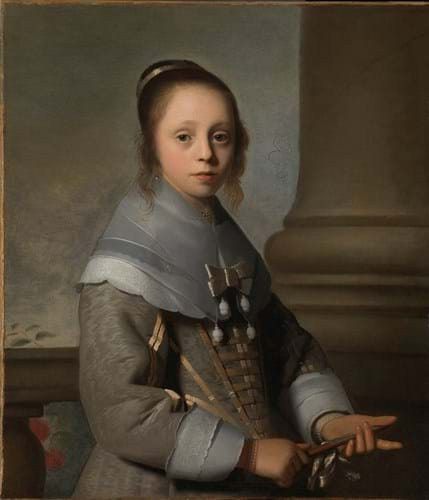
The picture came from the collection of the late banker George Pinto (1929-2018) via a tax arrangement with his estate.
Pinto was an art lover and patron of the National Gallery and a trustee of the Wallace Collection.
Last year the gallery acquired three pictures from the same estate (works by 18th century greats Jean-Etienne Liotard, Thomas Gainsborough and Sir Thomas Lawrence).
They were acquired via the Acceptance in Lieu scheme. The scheme, which is administered by the Arts Council, allows for the ownership of works of art to be transferred to the nation in lieu of inheritance tax. In this case the Luttichuys picture settled £46,818 of tax.
Born in London in 1616 to Dutch parents, Luttichuys (pronounced ‘Lootickhouse’) spent his early life in England, where the family was known as Littlehouse, the literal English translation of the name. He later moved to Amsterdam and enjoyed a highly successful career as a portrait painter until his death in 1673.
Auction house Christie's assisted in the arrangement.
Important moment in mid-17th-century Dutch painting
The gallery said that although Luttichuys may not be an immediately recognisable name, his portraits document an important moment in mid-17th-century Dutch painting when a classicising trend produced a brighter palette, of which this work is a prime example.
Portrait of a Girl shows a figure standing by a column and a balustrade. Her hair is tied back in a chignon, with tendrils hanging down on either side of her face. She wears a translucent folded cambric square neckerchief on top of a round neckerchief with an edge of densely worked lace.
This particular arrangement of the two neckerchiefs provides an important clue to understanding the work as according to Marieke de Winkel, a leading costume historian consulted by the gallery, it is seen only in portraits of the later 1640s. The fact that the cuffs reach to the wrist also points to the later 1640s; in the 1650s they sit higher up on the forearm.
There is a signed pendant portrait of identical size of a boy in a dress that similarly dates from the later 1640s but its whereabouts is unknown. It is believed that the pair are likely to be siblings. As late as 1834 the two paintings were still together in the same collection but they have since become separated.
National Gallery director Dr Gabriele Finaldi said: “George Pinto was a good friend of the National Gallery and it is very pleasing to have this beautiful portrait in the national collection at Trafalgar Square. We are grateful to his family, Christie’s and the AIL panel.”





